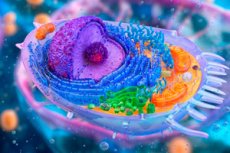New publications
Mitochondria, Immunity and Sport: A New Target for Combating Age-Related Obesity
Last reviewed: 09.08.2025

All iLive content is medically reviewed or fact checked to ensure as much factual accuracy as possible.
We have strict sourcing guidelines and only link to reputable media sites, academic research institutions and, whenever possible, medically peer reviewed studies. Note that the numbers in parentheses ([1], [2], etc.) are clickable links to these studies.
If you feel that any of our content is inaccurate, out-of-date, or otherwise questionable, please select it and press Ctrl + Enter.

Scientists from the US National Heart, Lung, and Blood Institute (NHLBI, NIH) - Jin Ma, Annie Son, Yulim Son, Ping-Yuan Wang and Paul Hwang - published a review inTrends in Endocrinology & Metabolism in which they summarize the evidence for the key role of mitochondrial innate immune signaling in how skeletal muscle adapts to exercise and acquires metabolic resistance to obesity and aging.
Problem
Traditionally, the inflammatory response following exercise has been considered a “side effect” of microdamage to muscles. But growing evidence suggests that a controlled immune response is important for rebuilding muscle metabolic programs—it reduces fat stores, improves insulin sensitivity, and strengthens cellular resistance to stress.
The cGAS–STING–NF-κB backbone
Decreased CHCHD4 and TRIAP1
With regular exercise, the levels of two proteins, CHCHD4 and TRIAP1, involved in mitochondrial homeostasis, decrease in skeletal muscle mitochondria.
Activation of cGAS–STING
Deficiency of these proteins results in the “leakage” of mitochondrial DNA into the cytosol, where it is recognized by the cGAS (cyclic GMP–AMP synthase) sensor.
CGAS generates the second messenger cGAMP, which activates the STING adaptor on the endoplasmic reticulum.
Inclusion of the NF-κB pathway
The STING-dependent kinase cascade triggers the transcription factor NF-κB, which regulates the expression of genes responsible for mitochondrial biogenesis, angiogenesis and antioxidant protection.
Biological effects
Adaptation to training
The formation of new mitochondria and capillary network is stimulated, and the aerobic capacity of muscles is improved.
Metabolic resistance
Mutant mice with CHCHD4 haploinsufficiency were protected from obesity in late life despite a high-calorie diet.
Cellular resilience
The switched-on genes of antioxidant enzymes and chaperones (Hsp70, MnSOD) increase resistance to oxidative and thermal stress.
Authors' statements
"We are the first to bring together evidence that mitochondrial sensors of innate immunity do not simply mediate inflammation but instead drive key metabolic adaptations to exercise," says Jin Ma.
"Targeting the cGAS–STING pathway in muscle is a promising avenue for developing a 'molecular exercise' that could provide some of the benefits of exercise to exercise-incapable patients," adds Paul Hwang.
Broadcasting Prospects
- Fitness mimetics: Small molecule STING agonists or CHCHD4/TRIAP1 modifiers can mimic the effects of exercise.
- Metabolic disease therapy. Stimulation of this axis may become a new strategy for obesity, type 2 diabetes mellitus and sarcopenia in the elderly.
- Improved recovery. Strengthening mitochondrial resilience will speed up rehabilitation after injuries and surgeries.
This study highlights the dual nature of mitochondria and innate immunity: in addition to protecting against pathogens, they are signaling hubs that link physical activity to metabolic health and stress resilience.
